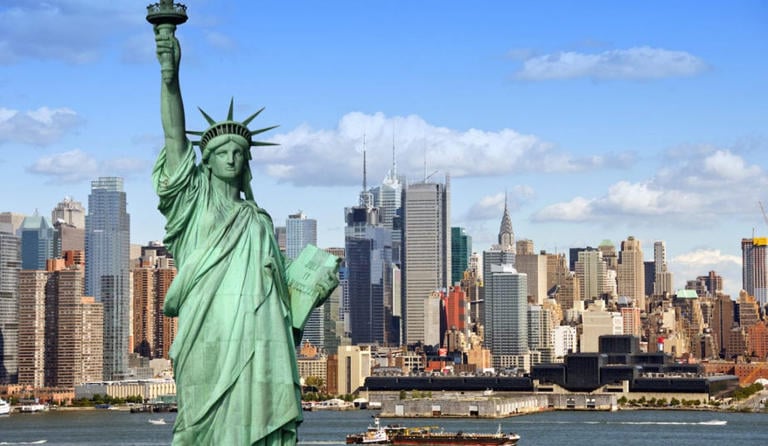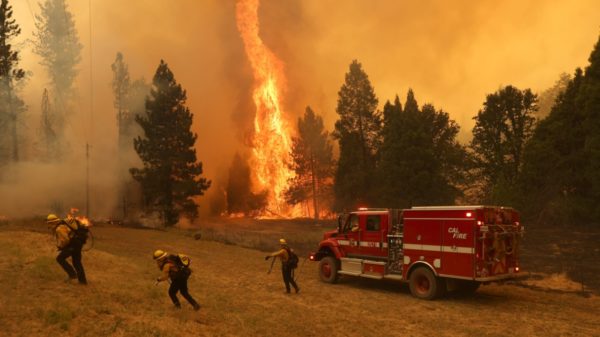Much recently, scientists have revealed a startling fact concerning the future of the big apple- New York City. This revelation has sent shockwaves throughout the city, as it appears that the fabled “city that never sleeps” may be in danger of sinking under its own weight.
Beneath the enchanting city of New York, the concerns of sinking have a ripple effect on sea level rise. This is happening much faster than the worldwide average as a result of the melting of the world’s glaciers and the expansion of seawater caused by climate change. Research also shows that along the Atlantic Coast of North America, sea levels are projected to rise three or four times faster than the global average.
Recent findings also revealed that the water surrounding the metropolis has risen by nearly 9in, or 22cm, since 1950. According to research lead author Tom Parsons, a geophysicist with the U.S. Geological Survey, in an interview with Live Science, shared that the rise in sea level will ultimately lead to flooding issues in New York and around the world.
For these researchers, understanding the circumstances behind issues relating to sinking cities or areas helps them evaluate the flood risks associated with these areas as a result of climate change. Although they believe the weight of the concrete jungle plays a major role in what is happening to the city, there may be other reasons for the issue. The scientists shared that one of these reasons concerns the way the earth constantly shifts since the last ice age ended, which occurred over 10,000 years ago.
GPS records show that lower Manhattan is sinking at a rate of 0.08 inches (2.1 millimeters) per year.
However, this phenomenon could possibly have a natural origin deeply rooted in history. A majority of the planet was covered by giant ice sheets dating back to the last ice age. This glacial burden caused the ground underneath it to sink, consequently causing the surrounding edges of landmasses to tilt upwards. Gradually, as these ice sheets started to melt away, the previously elevated regions began to sink. Disturbingly, previous research suggests that this subsidence may result in a substantial reduction of 19 to 59 inches (48 to 150 centimeters) along the East Coast by the year 2100.
Parsons and his colleagues shared that their aim was to investigate the impact of man-made factors, such as buildings, and the natural cause of subsidence. In 2019, while visiting his wife’s family in Belgium, he came up with the idea.
While he was staying near the cathedral in Antwerp, Parsons became fascinated by the enormous foundation stones that adorned the buildings. The stones had been transported from faraway places and strategically stacked up in one location, giving off the impression of a sort of small mountain. After making these observations of the buildings, he became curious and began to wonder about the possible impact of the heavy weight of all those buildings on the earth below.
Parsons shared that every building, including those built on strong bedrock, goes through a level of sinking or settling after its structure is completed. On the other hand, structures built on softer soils are more likely to experience significant settling.
These implications drew the attention of these scientists, and they decided to carry out an estimation of the 1,084,954 buildings in New York City’s five boroughs. Based on their calculations, the weight came to be around 1.68 trillion pounds (762 billion kilograms), and it was spread out over an area of 300 square miles (778 square kilometers).
Motivated by their desire for more discovery, they took it a step forward by creating advanced computer models. These models were created to simulate how the weight could affect different soil conditions and determine the probability of sinking happening in different parts of the city.
The satellite data revealed that the city undergoes an average of approximately 0.04 to 0.08 inches (1 to 2 mm) per year of subsidence rate. This data was in line with what the computer models predicted due to the earth’s natural movements since the last ice age. However, the researchers discovered that some parts of the city showed a much higher subsidence rate. They also observed that the weight of buildings could be a reason for this; however, they also warned that there could be other potential factors.
According to Parsons, the sinking rate in New York City is very low annually. He added that the sea level rise in New York is approximately 1 to 2 millimeters annually. Therefore, each millimeter of subsidence is equivalent to advancing one year in the future regarding rising ocean levels.
































